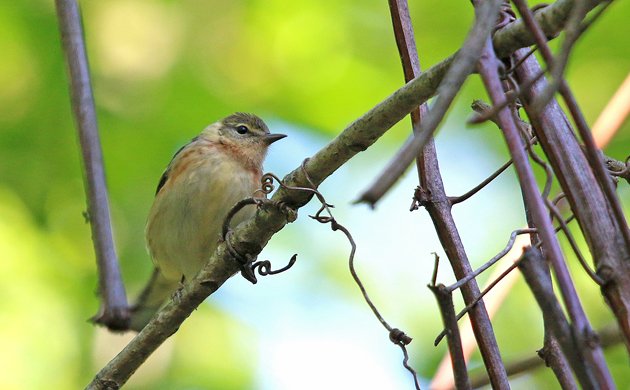
In spring migration most of the attention that birders pay to birds is given to males. There are two basic reasons for this. First, male birds sing. The singing, of course, draws attention to the males, which, considering that song is used to attract mates and to defend territory, is kind of the point. Second, male birds, with a few notable exceptions, have much more showy plumage. Why look at a drab female bird skulking in the brush when a brilliant male is singing its head off on an exposed perch? But female birds, even among the wood-warblers, are well worth watching.
Take the female Bay-breasted Warbler at the top of this post. Sure, the male is a much more brilliant black-and-bay but the subtle hues of the female, which echo the male’s more gaudy plumage, are pleasing to the eye. Not only that, but learning what the female birds look like is much more helpful in the fall, when everything is more subdued in basic plumage. So I thought I would take some time to look at the ladies this weekend, to say nothing of photographing them, in order to share with you the more muted hues of female birds. (This decision has nothing to do with the fact that we are starting to wrap up passerine migration in New York and the females now outnumber the earlier-arriving males and are therefore more easily photographed.)
Blackpoll Warblers like this female are often confused with Bay-breasted Warblers in autumn. But if you spend time staring at the females in the spring I bet that you will find it easier to differentiate them when they are heading south instead of north.
I’ve observed quite a few female wood-warblers messing about with nesting material while they are on migration, even in areas where they don’t breed. Folks on Facebook have surmised that this is an expression of their runaway hormones, much like males singing. Whatever the cause, it is cool to see a female Cape May Warbler even if she anywhere near as stripey as her tiger-like male counterpart.
This Black-throated Green Warbler spent quite a bit of time gathering bits of nesting material. She would get a beak full, drop it, and then start again.
If this were a male Scarlet Tanager your head would probably be exploding right now. But it is a female so you are still alive. See, female birds are good! I still can’t believe how cooperative this bird was at the Forest Park waterhole. It is like she wanted to show off her dull yellow plumage which, upon further consideration, does look rather nice with that green background, no?
Female birds. Taste the excitement!
…


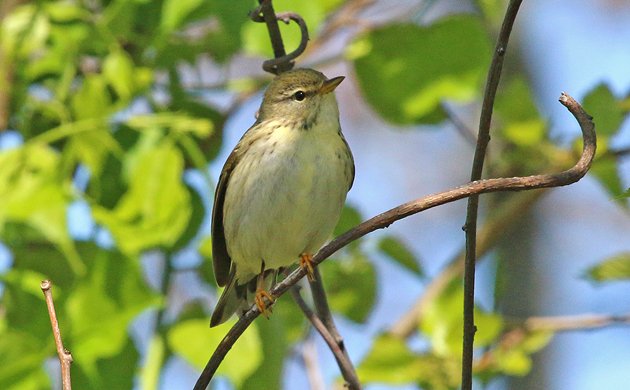
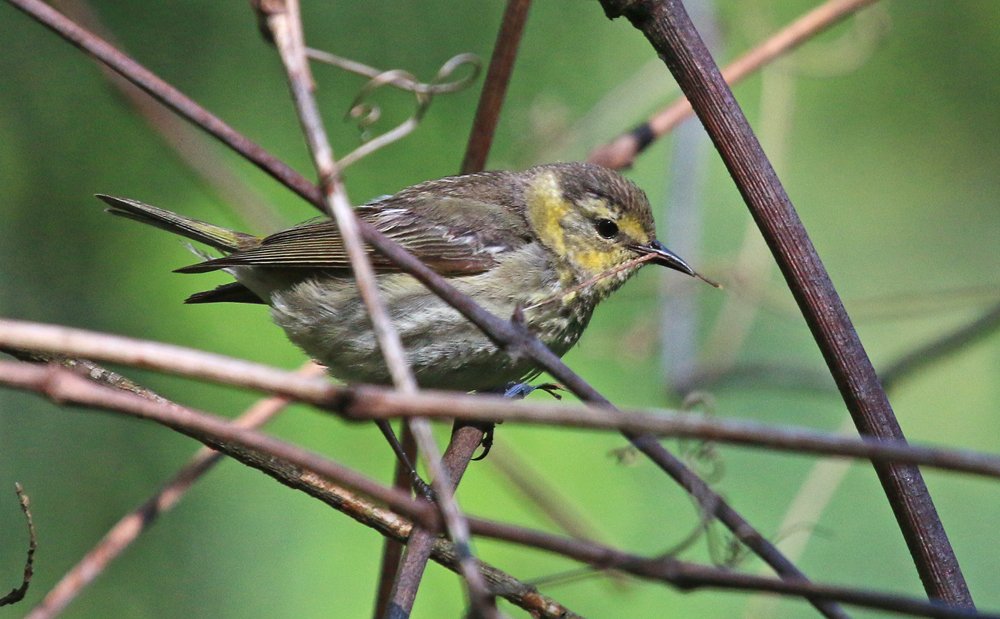
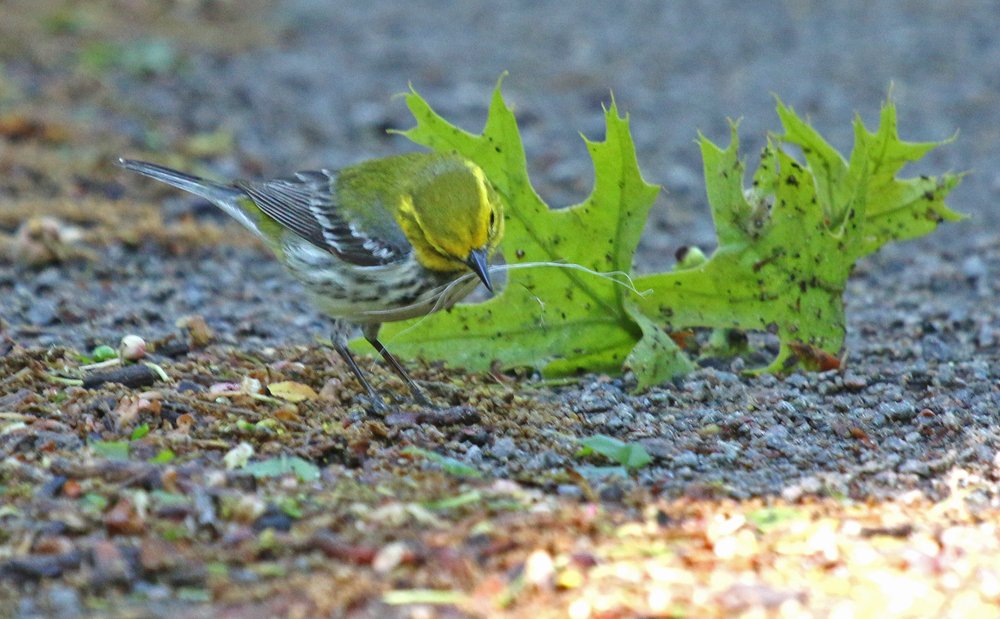
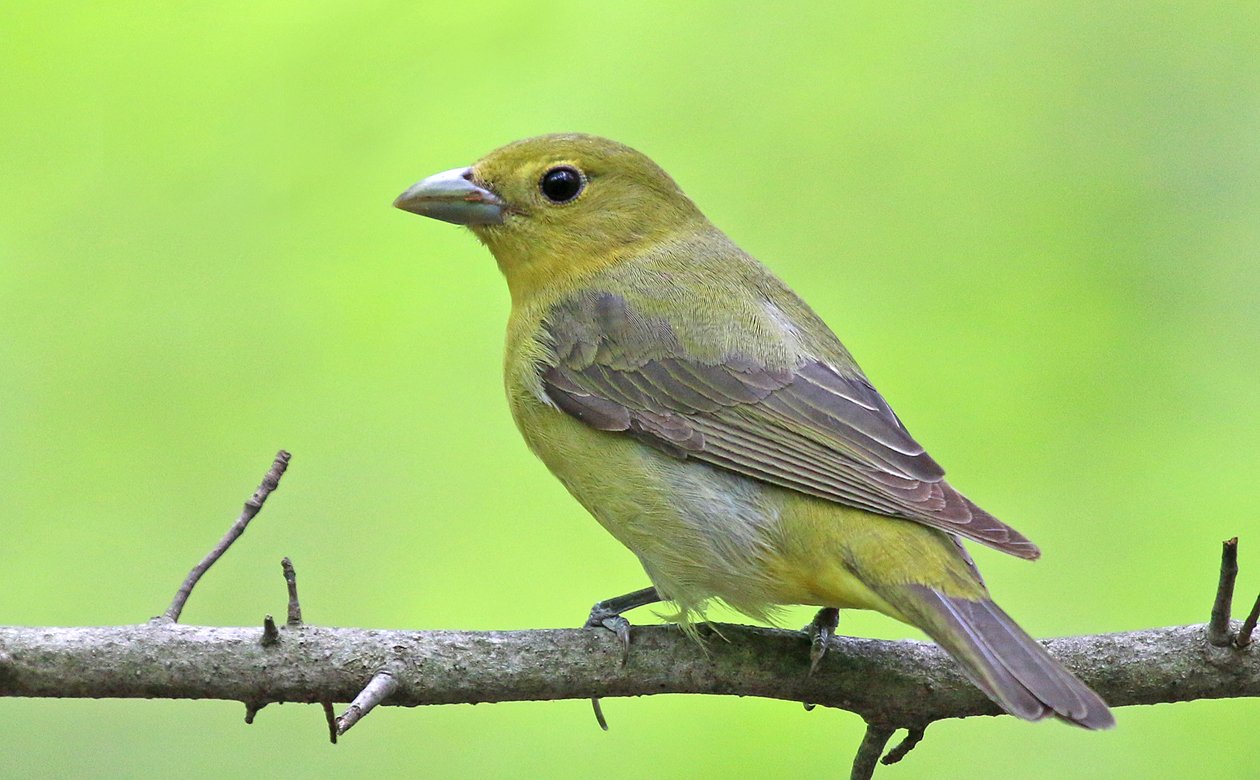











I never think of the females as drab. They have more interesting tonal qualities and variations than the gaudy males.